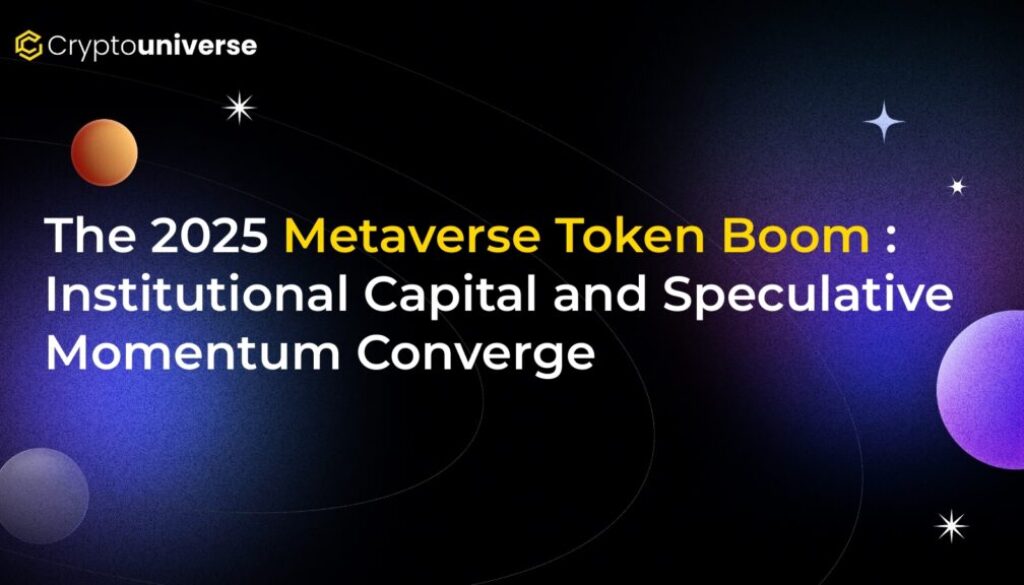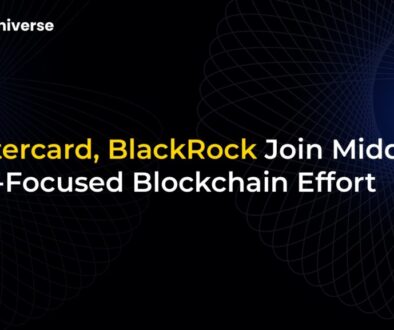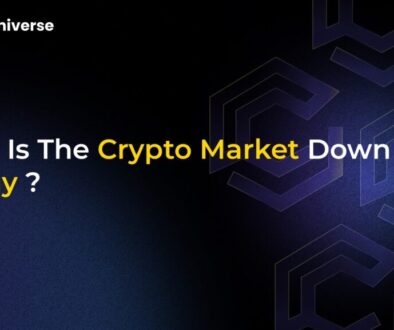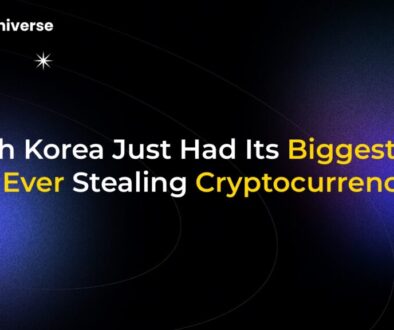The 2025 Metaverse Token Boom: Institutional Capital and Speculative Momentum Converge

The Metaverse Awakens: A $552 Billion Market Fueled by Two Powerful Forces
The year 2025 marks a pivotal moment for the digital frontier. The metaverse, once a niche concept for gamers and futurists, has exploded into a staggering $552 billion market. This seismic shift isn’t driven by a single catalyst but by the powerful convergence of two distinct worlds: the calculated, long-term vision of institutional capital and the fast-paced, high-risk fervor of retail speculation.
While Wall Street builds the foundational pillars of this new economy, everyday investors are fueling its most explosive trends. Understanding this dual dynamic is the key to navigating the opportunities and risks in the 2025 metaverse token boom.
The Institutional Wave: Building the Bedrock of Virtual Economies
The era of institutional skepticism is over. Big money is now actively constructing the financial infrastructure of the metaverse, driven by regulatory clarity and groundbreaking technological advancements. At the center of this transformation is Ethereum.
Ethereum: The Institutional Gateway
With the launch of Ethereum ETFs, a staggering $27.6 billion in assets under management (AUM) has flowed into the ecosystem. For institutions, Ethereum is no longer just a cryptocurrency; it’s a viable alternative to traditional fixed-income assets, offering attractive staking yields of 3–6%. This adoption is supercharged by critical network upgrades:
- The Dencun and Pectra Hard Forks: These updates have slashed gas fees by up to 90% and boosted transaction capacity to over 10,000 per second, making complex metaverse operations economically feasible.
The Rise of Real-World Assets (RWAs)
Perhaps the most significant trend is the tokenization of real-world assets. The RWA market has surged to over $25 billion, bridging the gap between traditional finance and decentralized virtual worlds. This allows for assets like real estate and private equity to be represented and traded on-chain, unlocking unprecedented liquidity. Established metaverse platforms like The Sandbox (SAND) and Decentraland (MANA) are prime beneficiaries, with decentralized banking and NFT-backed lending now securing over $6.5 billion in collateral.
The Retail Frenzy: Fueling the Speculative Fire with High-Risk Plays
While institutions lay the groundwork, retail investors are chasing explosive, short-term gains. This momentum is concentrated around a specific type of asset: low-float, high-fully diluted valuation (FDV) tokens. These projects create artificial scarcity by releasing only a small fraction of their total token supply at launch, often leading to parabolic price action.
Case Studies in Hype: WLFI and MUTM
Two projects exemplify this trend:
- World Liberty Financial (WLFI): With only 20% of its supply unlocked at launch, pre-market trading on major exchanges has pushed WLFI’s potential FDV to an eye-watering $20–$55 billion. Its success is a masterclass in narrative craft, blending structured tokenomics with partnerships that lend it an air of institutional credibility.
- Mutuum Finance (MUTM): This project leveraged a dual-lending model and a CertiK audit to raise over $15.15 million in its presale, attracting risk-tolerant investors drawn in by social media buzz and the promise of high returns.
However, this speculative energy is a double-edged sword. For every success story, there are projects like Shiba Inu (SHIB), which has seen declining volumes, reminding investors that hype without underlying utility is often fleeting.
Where Two Worlds Collide: The New Breed of Metaverse Tokens
The most fascinating developments are occurring where institutional and retail interests intersect. A new generation of projects is emerging, designed to capture the best of both worlds—marrying innovative, hype-driven mechanics with the stability and compliance that attract serious capital.
BullZilla ($BZIL) showcases this with a clever presale model. By automatically increasing its token price every 48 hours or after raising $100,000, it creates a deflationary pressure that rewards early adopters—a mechanism that appeals to both retail fear of missing out (FOMO) and an institutional appreciation for structured value accrual.
Similarly, BRN Metaverse is strategically pursuing regulation-compliant listings in the EU and UAE. This focus on compliance is designed to bridge the gap between its gaming utility and the need for institutional-grade liquidity, making it a more attractive long-term hold for larger investors.
The Next Frontier: AI, Gaming, and Infrastructure Catalysts
Looking ahead, the metaverse narrative is set to be dominated by Artificial Intelligence. AI is no longer a buzzword but a core technology enhancing everything from in-game experiences to decentralized finance (DeFi) protocols. Projects like Immutable (IMX) are already leveraging AI to power the next generation of Web3 gaming, while newcomers like 0G Labs (decentralized AI) and Somnia Network (metaverse infrastructure) are being hailed as foundational pillars of the 2025-2026 cycle.
This digital expansion is backed by massive real-world investment. Tech giants like Amazon, Microsoft, Google, and Meta are projected to spend a combined $325 billion on capital expenditures in 2025 alone. This colossal investment in cloud computing and data centers is building the physical infrastructure required to support a persistent, high-fidelity metaverse.
Navigating the 2025 Metaverse Landscape
The 2025 metaverse market is a dynamic and complex arena defined by its dual engines. Institutional capital provides a stable foundation and long-term legitimacy, while retail speculation injects the energy and momentum that drives parabolic growth.
For investors, success lies in identifying tokens that find the delicate balance between these two forces. The winners of this cycle will be the projects that offer tangible utility, embrace regulatory clarity, and build sustainable ecosystems. As technology, finance, and market psychology continue to converge, those who can distinguish enduring innovation from fleeting hype will be best positioned to capitalize on the next chapter of our digital evolution.


